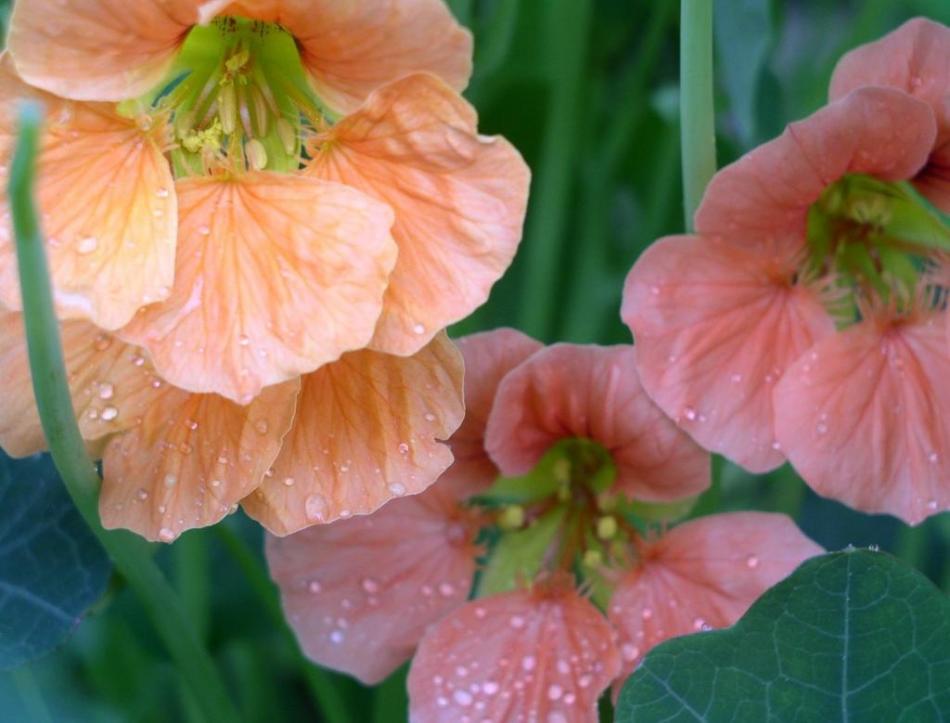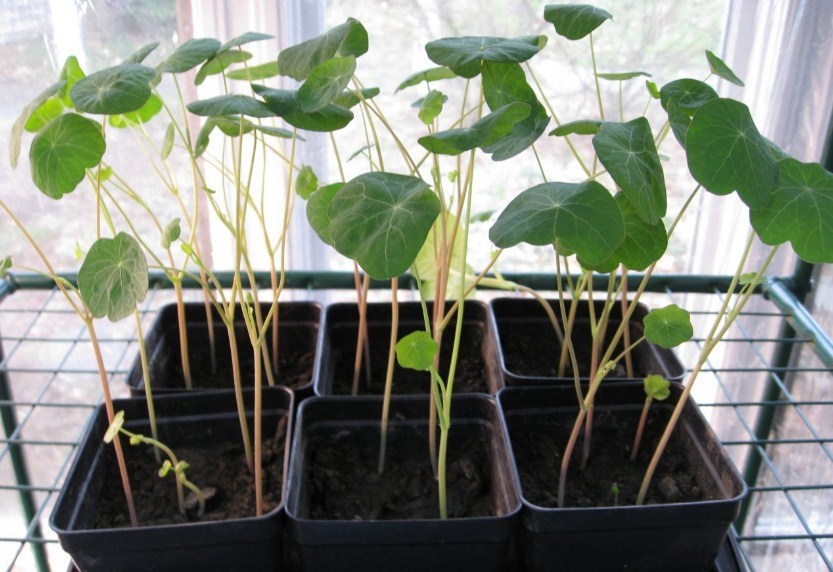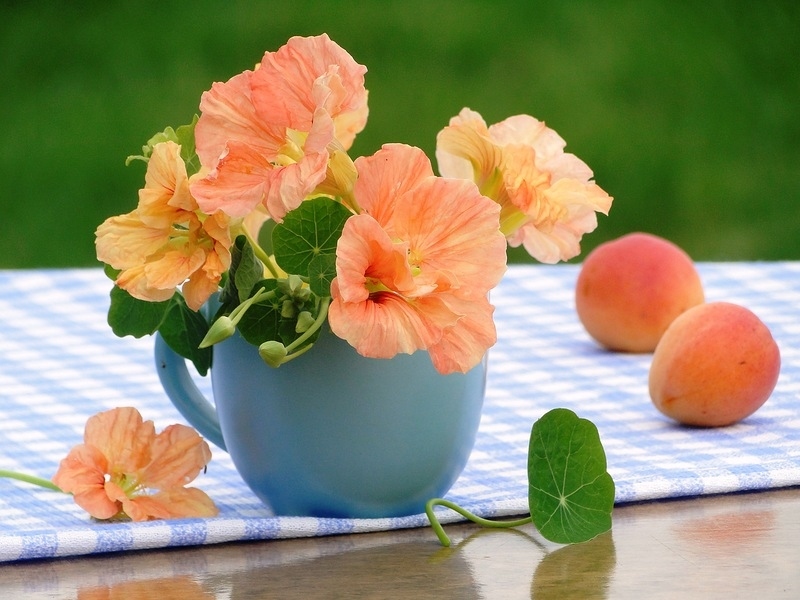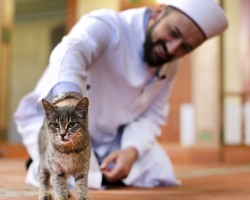In this article, we will consider how to grow nasturtium from seeds, as well as how to care for a plant and fight nasturtium diseases.
Content
- Nasturtium: species and varieties of plants
- How and when can you plant nasturtium with seeds in open ground?
- How and when to sow the seeds of nasturtium for seedlings?
- Care for nasturtium seedlings
- When and how to plant nasturtium seedlings received from seeds?
- What place to choose for landing nasturtium?
- How to properly care for nasturtium after landing?
- Nasturtium: Methods of combating plant diseases
- How to collect the seeds of nasturtium?
- How to store nasturtium seeds?
- Video: growing nasturtium from seeds
Hurifying their personal plot, gardeners often prefer colors. The site planted with flowers is always pleasing to the eye, and the trouble with it is often less than with a plot planted with any vegetable, fruit crops.
To date, there are a huge number of various floral cultures that differ among themselves in their shape, color, and the number of flowers. One of the least whimsical and very beautiful colors can be called nasturtium.
Nasturtium: species and varieties of plants
Capuchin, so they also call this flower, refers to grassy crops and has a total of more than 90 species in a total of more than 90.
- Nasturtium can be either an annual or a perennial plant. However, in our climate in the gardens on open ground it is grown as an annual plant.
- The flowers of culture, depending on the species, have a different color, but everything smells equally pleasant and tasty, having a fairly pronounced aroma.
- The flower gained its popularity because of its unpretentiousness. Sowing and caring for this culture does not take much time and effort, so even a novice gardener can cope with these processes.
- Another feature of the flower, in addition to its unpretentiousness, can be called the duration of its flowering. Seeing the first flowers around June, you will enjoy them until the frosts.

Nasturtium can be represented by the following views:
- Shrub. The very name of the species indicates how such nasturtium looks. Very often it is shrubby nasturtium that is used to design flower beds.
- Ampel. The plant grows a cascade. Such species are most often used for planting in suspended pots.
- Weaved view. Nasturtium of this species has quite long stems, thanks to which it easily weaves on grids, fences, various supports, etc.
- Stretched view. Such a plant does not differ in large sizes and, as a rule, reaches a height of only 25 cm.
- Laying appearance. Such nasturtium grows a continuous canvas, such a plant looks very beautiful in a front garden, flower garden.
- Vetting species or foreign nasturtium. Such a flower has a feature-its stems, interwoven with each other, form something like a vines, which can reach 4 m in height.
- You can also highlight such a look as nasturtium is big. This plant is characterized by bright and quite large colors.

As for the varieties, the following include the following:
- "Cherry Rose." This variety is represented by small plants that reach 25 cm in height. The flowers are quite bright, most often cherry and pink.
- "Day and night". The flowers of this plant have a very interesting color, most often it is a bright red and delicate yellow color.
- "Yeti". This plant is climbing. The color of the colors is usually light. It can be creamy, delicate yellow, white.
- "Pich Melba". Under such an interesting name, a low variety of culture is hidden, which blooms with beautiful orange colors.
- "Bright flower bed". This variety is a great choice for those who want to add more bright colors to their front garden. This variety is represented by colors that have 5 different colors.
How and when can you plant nasturtium with seeds in open ground?
Nasturtium refers to this type of plants that are easiest to propagate with the help of seeds. This process is not complicated, therefore, for successful planting colors, in this way you need to only know a couple of recommendations and, of course, fulfill them.
- We immediately note the fact that the seeds of this culture are stored for a long time. Therefore, you can plant even those seeds that were collected 3-5 years ago.
- Initially, let's talk about when it is worth planting nasturtiums in open ground. You need to know and remember that this culture is quite heat -loving, so even small frosts will be able to destroy it. Based on this, the most suitable period for sowing seeds in the ground is considered to be the middle or end of May. All this, of course, depends on the weather and how quickly spring has come.
- It also happens that the seeds are planted, and the weather has changed sharply. In this case, make sure that the future plants are warm enough - cover the seeds either with a film or other suitable material. Thanks to the additional heat, the seeds will remain healthy and germinate faster.

Before the sowing procedure, seeds must be treated. Experienced gardeners share their experience and tell different processing options:
- It is necessary to lower the seeds into a fairly hot water and withstand them there at least 15 minutes. Then transfer the seeds into a saucer with clean warm water and leave for at least 1 day.
- In order for the seeds to sprout faster and be more resistant to pests, they are recommended to be treated with various drugs that stimulate growth. You can take a remedy called "Epin". It is necessary to dilute 4 drops of the product in 100 ml of water, and then lower the seeds into the resulting liquid and wait at least 10 hours. For 10 g of seeds, 50 ml of the resulting solution will be enough.
- You can limit yourself to a simpler and more effective way - to soak the seeds in a solution of potassium permanganate. To do this, make a weak, barely painted solution and soak the seeds in it for half an hour. Next, rinse the seed in clean water and let it dry.
- Next, in the soil we make the holes necessary for sowing, the depth of each 2-3 cm, the distance between them should be at least 25 cm. If desired, you can slightly fertilize the soil. To do this, it is recommended to use ash, compost.
- You can sow no more than 4 seeds in each hole.
- The site on which the seeds of flowers are sown are sown, if necessary, insulate with a film or other suitable material.
- Watering culture is recommended to be carried out with warm water - this will contribute to the speedy germination of seeds.
- After a few weeks, your eyes will delight your eyes, and after another 1 month you will enjoy bright and aromatic colors.
How and when to sow the seeds of nasturtium for seedlings?
- Most often, culture seeds are sown immediately in open ground, but sometimes weather conditions do not allow sowing in this way. In this case, the following decision will be correct - sow the seeds of nasturtium for seedlings, And then plant stronger plants in the ground.
- As mentioned earlier, this culture refers to thermophilic ones, so it can only be sown in open ground after frosts pass. In home, the cold is not terrible to the cold, so the seeds for seedlings need to be sowed in April.
- You can sow seeds in small pots, cups, both special and household, peat tablets, etc.
- The seeds themselves also require a certain processing. Initially, carefully inspect them. Small, damaged and deformed throw away, because they still will not germinate.
- Then prepare a disinfecting solution. For this, the old good remedy is perfect - potassium permanganate. The solution must be done not very concentrated, the water should only be slightly tinted, while it is recommended to make the liquid hot. In the resulting liquid, lower all the seeds and wait for about 20 minutes. After that, send the seed in clean water and leave for 1 day.

- The land in which you will sow seeds can be bought in a specialized store or buy all the necessary components and connect them yourself. To do this, take turf soil, sand and peat and mix all this in equal proportions. Dissolve the resulting soil with hot water, you can with the addition of potassium permanganate. In such a solution, you need to withstand the soil for at least a day, after which it can be used.
- So, take the glasses, fill them with soil and make them in each hole about 3 cm deep.
- In each hole we put a couple of prepared seeds. Throw the hole with soil, slightly tamping it, and then a little moisturize with warm water
- We transfer all the cups to a warm and bright room.
- Thus, from the seeds we will get a beautiful and stronger seedlings, which after you can completely calmly plant in open ground, not afraid that it will disappear due to frosts or not take root.
Care for nasturtium seedlings
In order for the seedlings to grow strong and healthy, it needs to ensure proper care and create favorable conditions. To do this at home is quite simple.
- After sowing the seeds, literally after 2 weeks the first, still very weak sprouts will appear. During this time, the temperature in the room should be not lower than 20 ° C. Such conditions will contribute to the speedy germination of sown seeds.
- When the sprouts are already visible, the temperature must be reduced. 18-19 ° C will be quite enough.
- In this case, it is necessary to control the lighting in the room with seedlings. If there are few light to plants, they will begin to stretch and as a result will become weak and unsuitable for further planting.

- If in a room where there are few light plants, you can use special lamps with which you can easily increase daylight hours.
- As for watering seedlings, it must be carried out as necessary. As soon as the soil in the container becomes dry - carry out watering. At the same time, know, nasturtium does not like moisture and does not need spraying.
- Well, and one more point. If you sowed several seeds in 1 container, then after germination of seedlings you need to leave only 1. To do this, inspect the sprouts and choose the strongest and healthy, the rest must be removed.
When and how to plant nasturtium seedlings received from seeds?
When the seedlings reaches the desired size, and weather conditions will be suitable, proceed to transplanting plants into open ground. The size of the seeding is approximately 7-8 cm suitable for transplanting, the air temperature should be not lower than 15-16 ° C.
- It is important to immediately note one nuance: the roots of this culture are extremely vulnerable, so get the plants from pots, cups, etc. It is necessary very carefully.
- Depending on the weather, it is recommended to plant nasturtium seedlings in mid -May. If the spring turned out to be very cold, then postpone the procedure before the end of this month or early June.
- So, take the plants and look at the size of the container in which they are. Based on this size, we dig the right holes in the ground. Each hole should be slightly larger than the container itself.

- Between the holes we must leave a little space, about 25 cm for small plants and 35 cm for large ones.
- Gently take out the seedling from the container, while in no case we remove the ground from the roots. Then we put the plant in a prepared hole, dig the earth from all sides, and then pour warm water. Watering is always carried out exclusively under the root of the plant.
- If you doubt that the nights will be as warm as the days, then be sure to cover the seedlings planted with a film.
- When planting nasturtiums, it is not recommended to fertilize the soil with organic substances, because because of this the plant will go into greens, but there will be very few colors on it.
What place to choose for landing nasturtium?
- Many novice gardeners believe that the place where the flowers are planted does not matter much. However, in fact, this opinion is erroneous, since all cultures need different conditions. Some colors need more light, others grow perfectly in the shade.
- Nasturtium is very thermophilic and photophilous cultureTherefore, if possible, for its landing, you need to choose the appropriate place. Try to plant flowers away from tall trees and shrubs that will close the light.
Important: Pay attention to the protection of the place from the strong wind. This culture cannot withstand strong gusts of wind, so this fact must be taken into account.
- If you want nasturtium to grow in a curly way, be sure to provide it with high supports. With such structures, the plant will very easily grow to 3 m in height.
- As for the soil that this culture loves, it is slightly acidic and light soil. Clay soil is not suitable for nasturtium, since in it the roots of the plants begin to rot over time.
How to properly care for nasturtium after landing?
In order for this beauty to please you with her flowering, it is necessary to provide her with all the necessary conditions. By the way, there are not many of them as one might think.
- Constantly control the condition of the soil under the plant. It is necessary to water the nasturtium only “on request”. If you see that the earth is dry, boldly water. The next watering is carried out only when you notice that the soil has dried again.
- If possible, fertilize the culture with minerals. Similar top dressing is not needed only during flowering.

- The earth around the flower is periodically loosened.
- As soon as you see that the flower has faded, ruthlessly remove it. Thus, the rest of the flowers will delight you with their flowering much longer.
Nasturtium: Methods of combating plant diseases
This culture, as, in principle, any other, is subject to various ailments. However, it is worth noting one feature of this plant, omnivorous insects “do not like” it, so you should not be afraid of different butterflies, beetles, etc.
- At the same time, nasturtium may die due to rust, gray rot, ring spotting and different other bacterial ailments.
- Unfortunately, all sick plants need to be destroyed, since they are the pedigns of the disease and if they are left, then all neighboring flowers will get sick.

- So, we destroy the sick flowers, the place where they were planted are necessarily processed. To do this, you can use potassium permanganate solution. Make a hot, sufficiently concentrated solution, and pour it into the holes.
- Be sure to treat all the remaining plants with chemical preparations that destroy pathogenic bacteria and insects.
How to collect the seeds of nasturtium?
If you liked this culture, and you want it to please you with your flowering next year, be sure to collect all the seeds ripened on the plant. It is much better to propagate nasturtium precisely with its seeds, and not purchased.
- Semen of nasturtium ripen in peculiar fruits, and this process begins, as expected, after wilting the flower.
- The seeds are ripened for about 1.5 months, and after that, if they do not collect them, they fall into the ground.
- So, to decide for exactly when it is necessary to collect seeds, look at the fruits. The ripened fruit becomes white, yellowish, but not green. If the fetus becomes the corresponding color, gently sink it.

- For sowing, exclusively healthy and the largest seeds are selected.
- If you allow self -sowing, that is, skip the moment when the seeds will be mature and they fall into the ground, it is quite possible that they will lay there all winter, and in the spring, under suitable weather conditions, will germinate.
How to store nasturtium seeds?
In order to sow nasturtium again in the spring, it is necessary to properly store the seeds collected in the fall:
- After all the seeds are collected, they must be reviewed. Next, it is worth taking the best from the available ones, and all small and sick need to be thrown away.
- Then it is worth drying the seeds a little on the windowsill and pack them.
- Sowing the seed must be stored in paper bags, in a dry place. At the same time, in the room where the seeds will be stored, a temperature of at least 20 ° C should be maintained.
Nasturtium is a beautiful flower that is completely unpretentious compared to other cultures. This plant gets along well with almost any “neighbors”, with its combination with which it creates the most beautiful view in the personal plot.







